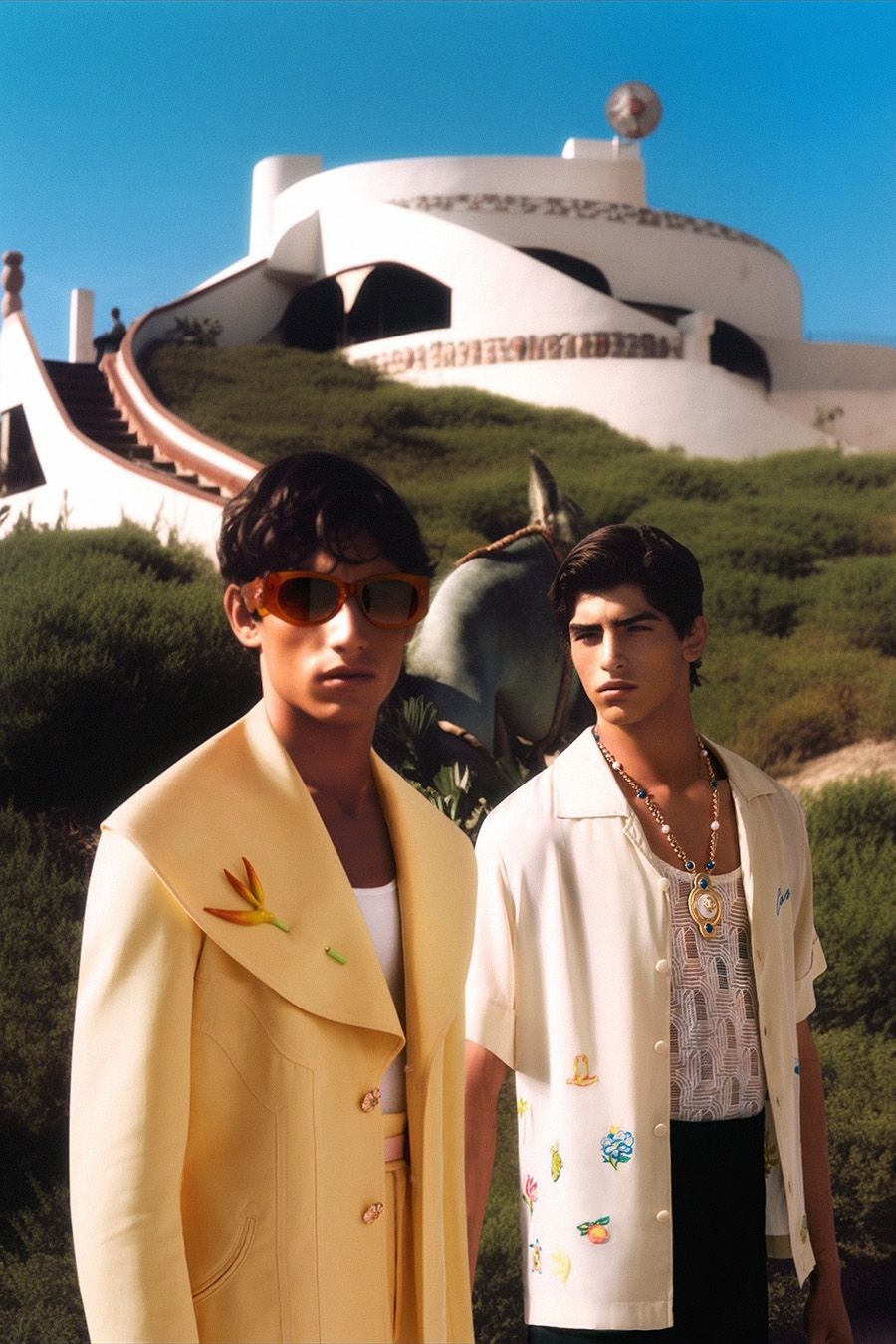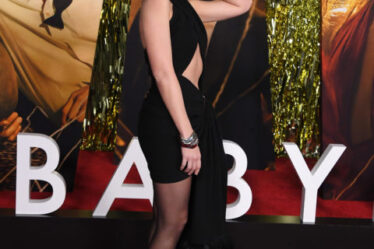
Casablanca is so rooted in classic methods that the Paris-based brand still shoots its campaigns on film with specifically chosen cameras.
So when Charaf Tajer, its founder and creative director, and Steve Grimes, the brand’s art director, began discussing the possibility of using artificial intelligence to produce their latest campaign, they weren’t totally serious.
“It was a bit of a joke at the beginning,” Tajer said. “But then we were like, ‘Yeah, we can actually find beauty in this.”
They enlisted Luke Nugent, a longtime fashion and art photographer who recently began creating AI editorials using the image generator Midjourney, and produced the Spring-Summer 2023 campaign for Casablanca’s “Futuro Optimisto” collection, marking the brand’s first steps into AI. The images are set in a Mexican landscape and are stylized to look more like hyperrealistic paintings than photographs. Grimes noted it’s meant to have a surreal quality. When they were designing the collection, which was inspired by a trip to Mexico, they were thinking of UFOs, space cowboys, the desert and nature.
“The result that we got from it I think feels very in-keeping with the brand and the aesthetic and the type of imagery we do,” he said.
AI has become a hot subject in the tech world and beyond following the public release of tools such as the image generator DALL-E and chatbot ChatGPT over the past several months. They’ve been used to create a deluge of memes, like one mashup of Harry Potter and Balenciaga, but also spurred businesses to find practical applications. In fashion, it’s led to companies experimenting with AI for uses like clothing design and online shopping assistants.
Casablanca joins a short but growing list of brands using it for campaign imagery. Earlier this year, for instance, Moncler teamed with Maison Meta, an AI-focused creative agency that also organised the recent AI Fashion Week, on a campaign for its Genius project.
But the technology has sparked a backlash over concerns it will replace human creativity and put people out of work. Many of the top comments to a teaser image from its new campaign that Casablanca posted to Instagram a week ago attacked the brand for using AI.
“It’s definitely a new medium and it’s not replacing photographers to me,” Tajer said. “A lot of people are saying, ‘Oh, it’s the end of models. It’s the end of photographers.’ We’ve seen that kind of comment. But really, for me, it’s a different world.”
He and Grimes emphasised the amount of creativity and work needed to produce the images. The process of researching and storyboarding was just like it would be for any other campaign, they said, and it still involved about 10 people contributing their ideas and feedback, including a set designer, lighting person, stylist and more.
There was also retouching needed on the visuals, and because the AI will transmute any uploaded product photos in the process of generating its output, they still had to shoot their clothing on models in the same poses as those in the AI and add them in afterward to make sure the items looked correct.
The rest of the process was entirely different. Rather than casting from model sheets and scouting locations, they went back and forth with Nugent numerous times refining the prompts used to get the imagery they wanted. It helped that he had a background in photography to be able to compose the visuals. Ultimately, it ended up taking longer than a normal photoshoot.
Tajer, who said he’s had a passion for old-fashioned film photography since he was a teenager, believes AI is analogous to electronic music or sampling. It may be done with a computer, but it still requires creativity and talent to produce a good result.
In some ways the freedom the AI allowed was also a double-edged sword, he noted. It offers essentially infinite possibilities.
“I think this is what makes it a real artistic tool, knowing that, like with any type of artistic media, you have all the possibilities, but the work of the artist is to define what he wants,” he said.



